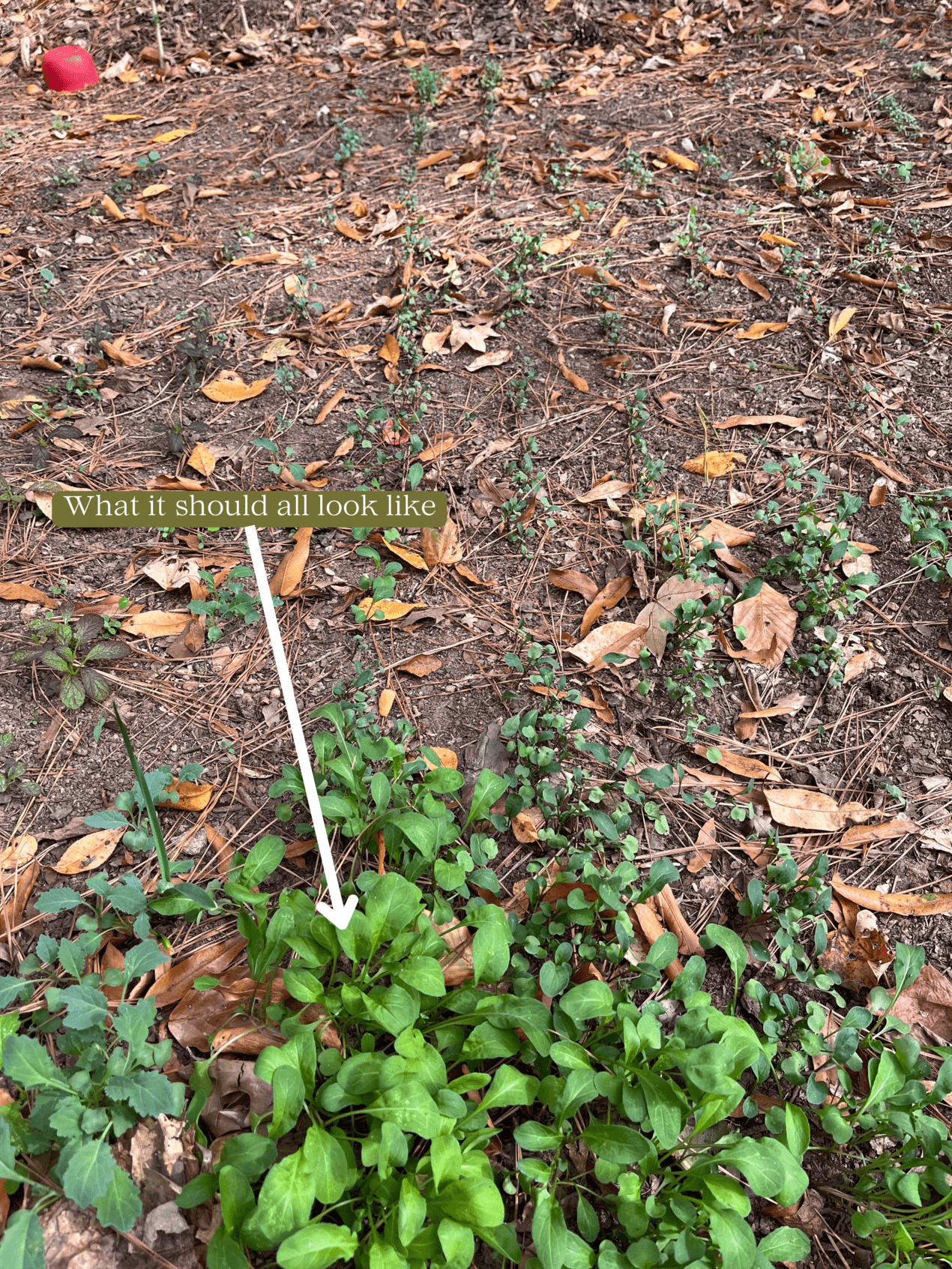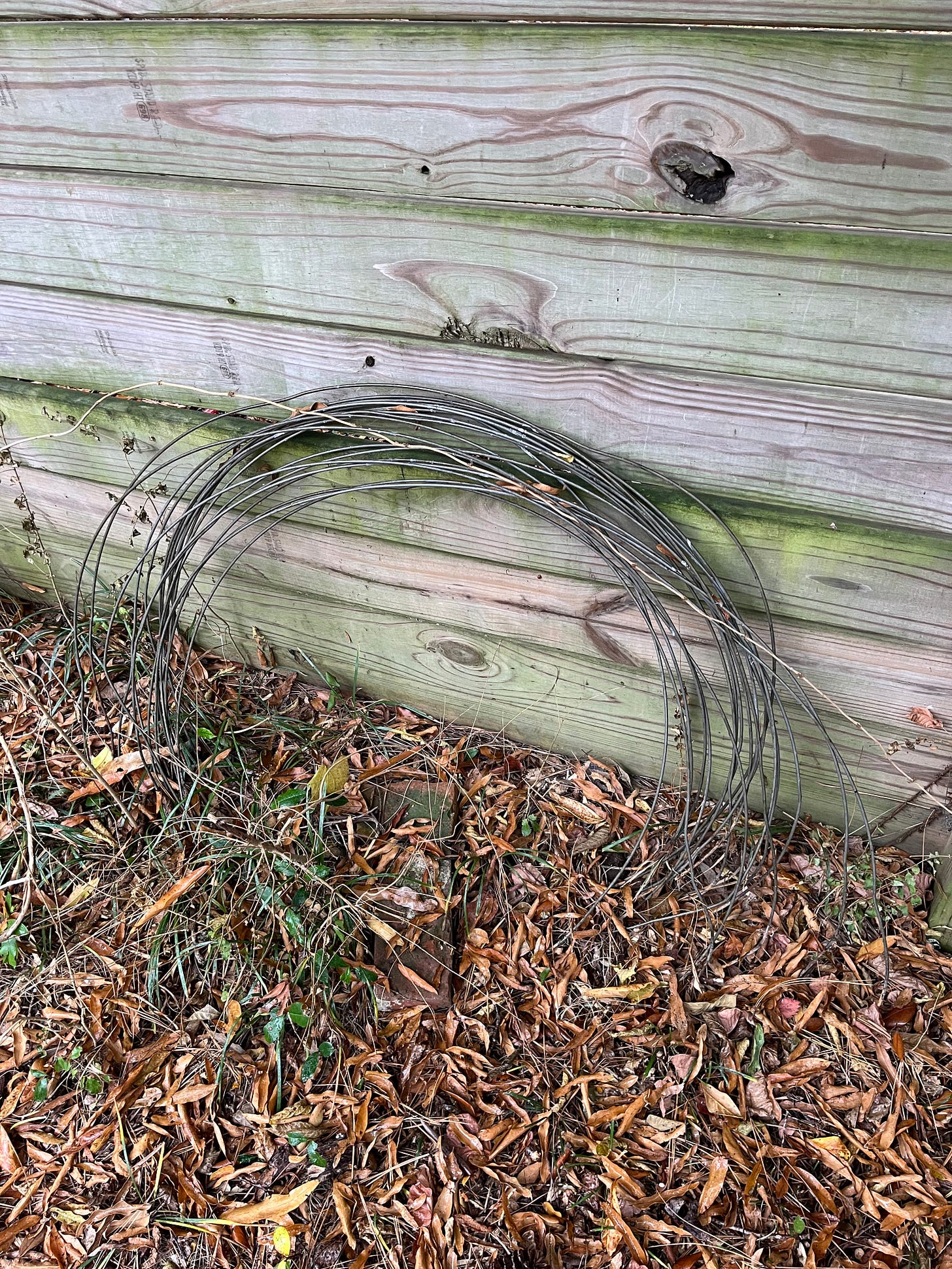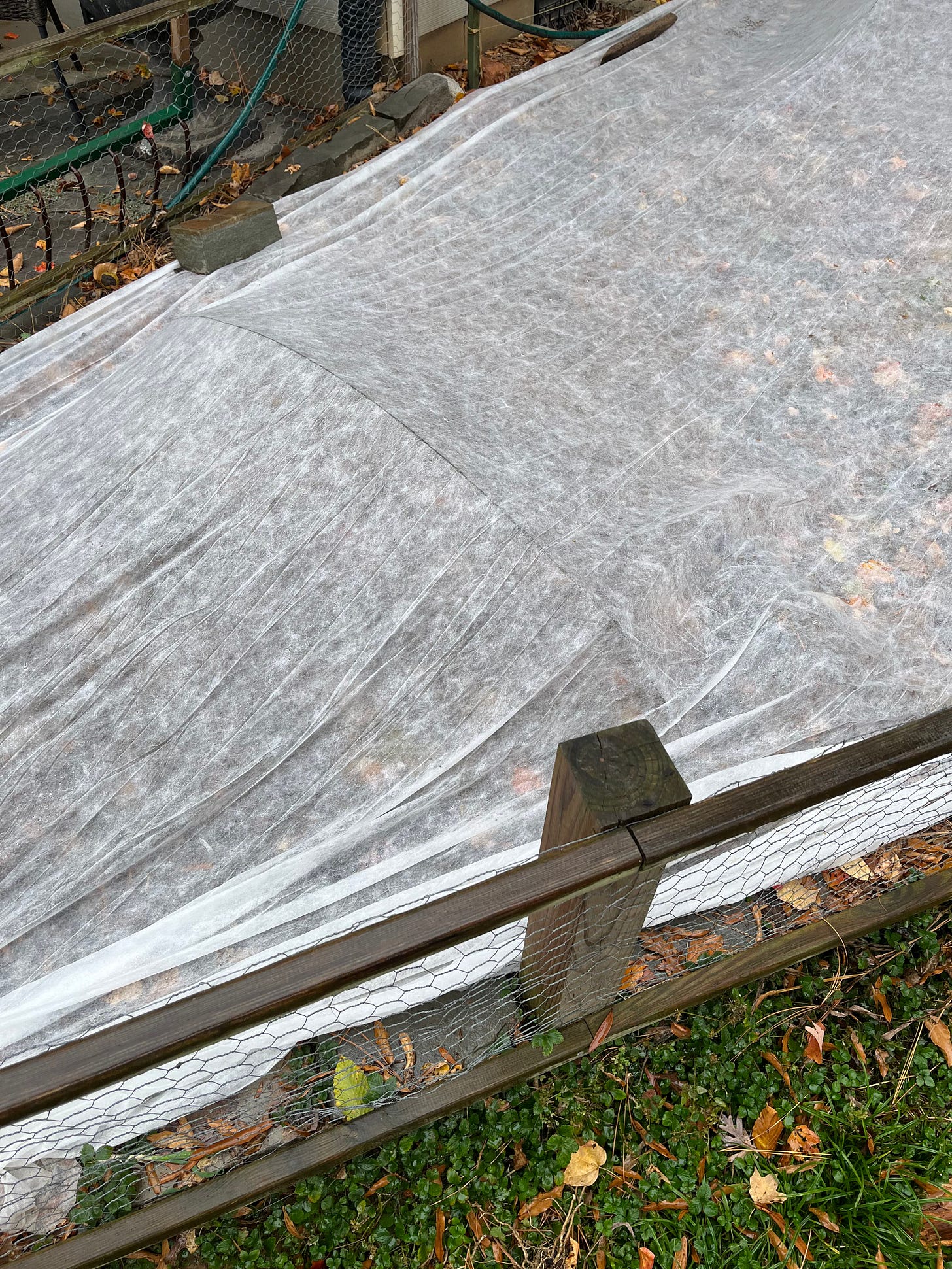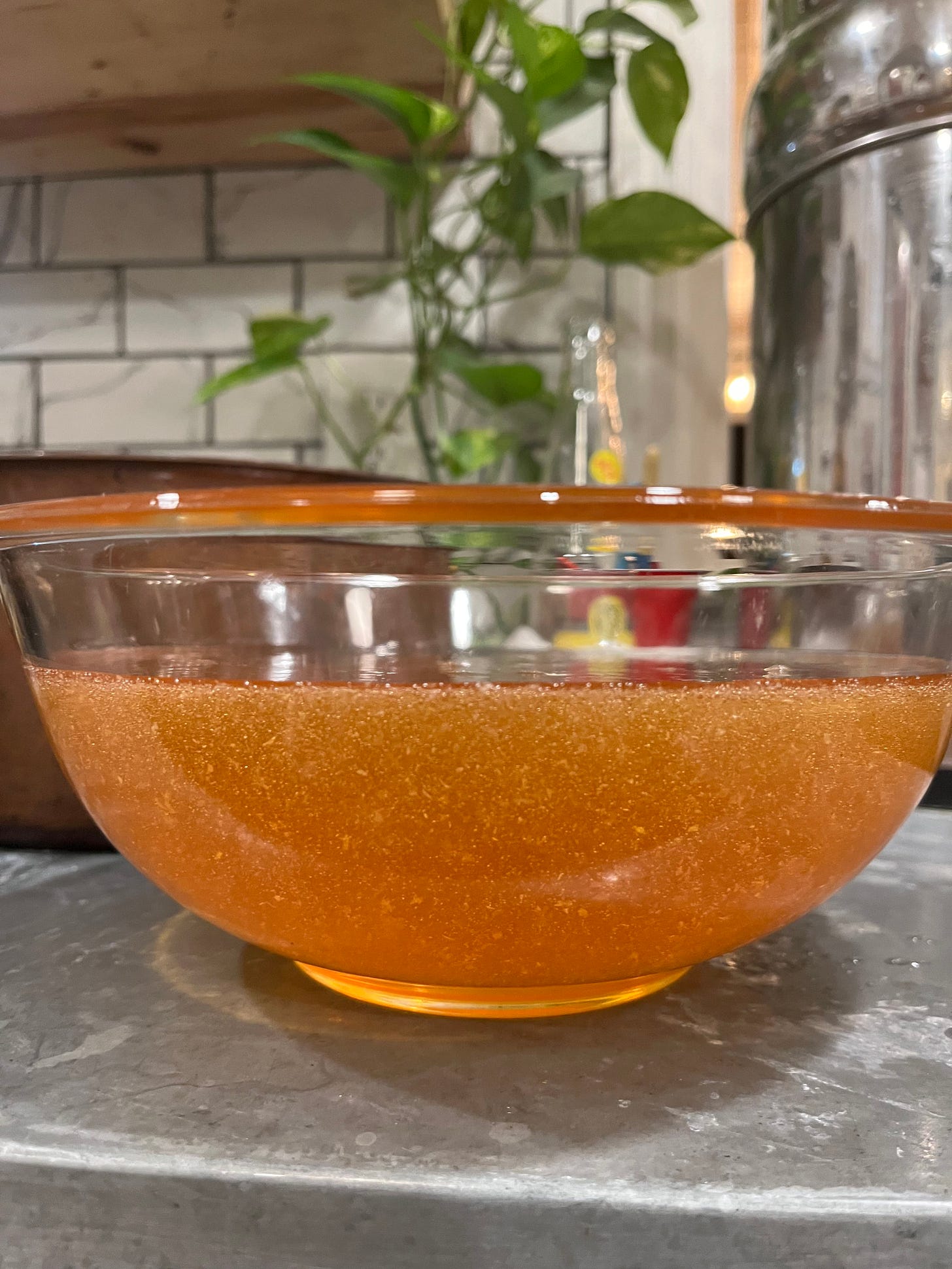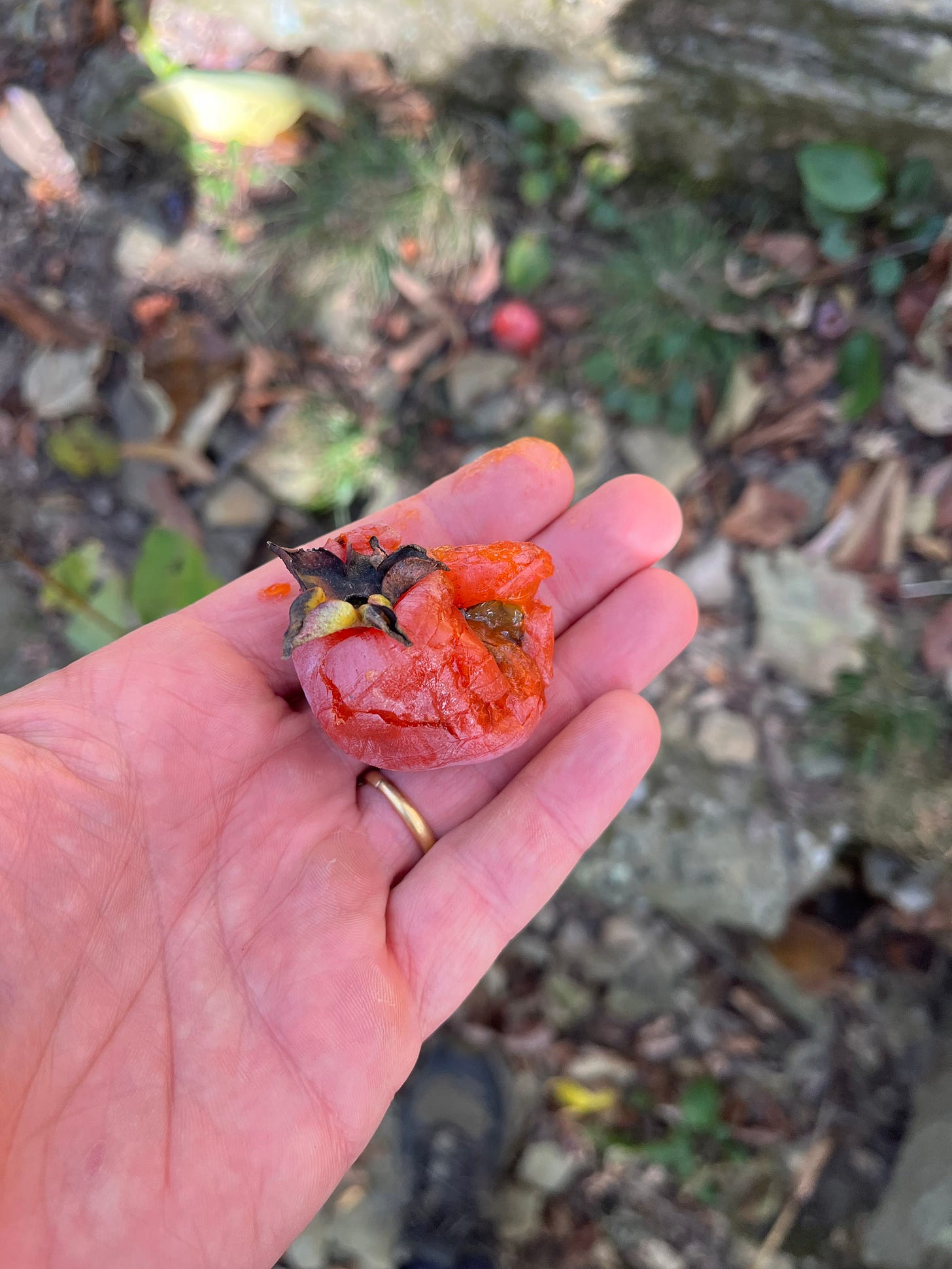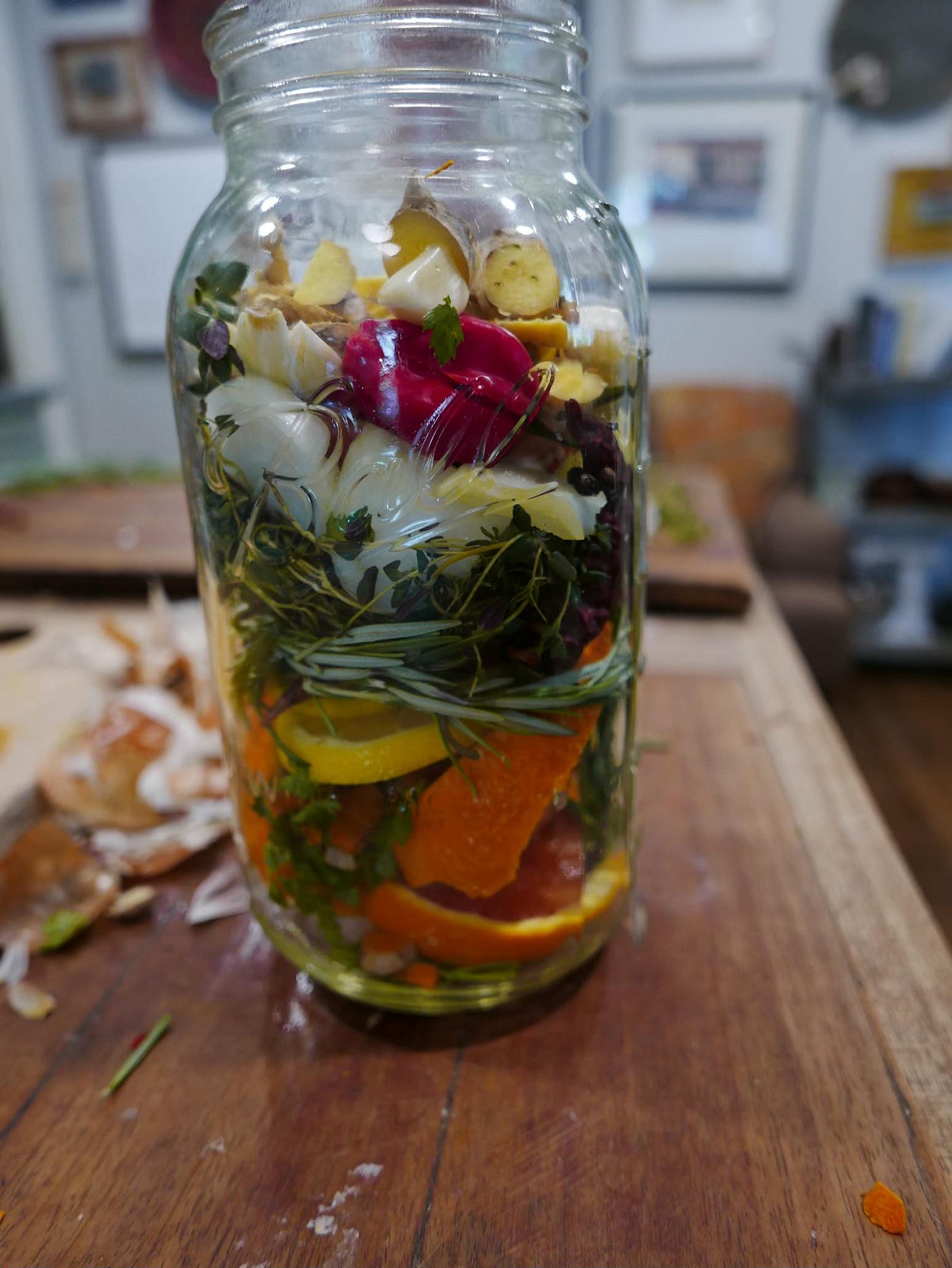🏡 Looking back to October 2023
Inside I write about planting garlic and onions, soil fertility problems, and how a senior scientist's comment is a great example of the mainstream counter-narrative when it comes to honey bees.
Inside
🧅🧄 Planting Garlic and Onions
🥀 Soil Fertility Problems
⚔️ Protecting the Garden
🍯 Honey Collection
🌳 Seeding Acorns
🚒 Fire Cider
🎙️ ACL Podcast
🏡 Lawn Garden
🧅🧄 Planting Garlic and Onions
We got our onions and garlic in the ground. Finally. We planted onion sets that we puirchased form the local feed and seed store. The garlic we planted was from saved bulbs that we planted last year. This variety we originally got from friends. It has been in their family many years. I asked her about it and here is what she shared:
“Its a variety that my husband’s family has grown for over 20 years. Great Aunt Selma from Flintville shared the bulbs from stock she’d been growing for as long as she could remember (25+ years). Definitely a family heirloom that we fondly call ‘Velma’s Garlic’”
I hope to continue the tradition and pass this heirloom garlic on down the line!
🥀 Soil Fertility Problems
I’m really disappointed to share that our first salad seeding isn’t going well. It seems clear to me that it is a fertility issue. There is a portion of the planting that looks great. And the rest does not look great. The area that looks really good is where we dumped a bucket of composted chicken manure. (I wrote about that here.) I know what you are thinking - Duh, of course it’s growing well there. But here is the thing, I spread the compost out! And, I wouldn’t think the greens would be as stunted as they are, even without the compost added.
Honestly, I’m embarrased. For various reasons, I avoid sampling my soil and sending it off to labs. It’s dumb that I choose to do this. At a minimum, getting a survey done every 2-3 years would be really helpful. I also would like to believe that mulching and minimal tillage will suffice. But this is a fantasy world. For the organic gardener, adding in a healthy portion of compost to your garden each year is critical. I have pushed back against this some because majority of people aren’t going to make their own compost, much less have access to the really good stuff (manure) that is needed for a robust, fertile compost additive. The other option, which most people will likely turn to, is bagged compost that you can purchase at garden stores. I’ve had mixed results with these bags and prefer to avoid them. But… We have to feed our soils. It’s imperative. Especially if you are like us and garden year round and plant intensively, close together.
A friend of ours, who gardens circles around us, happened to stop by. We showed her the greens and she suggested we spread out some blood meal, a natural nitrogen fertilizer. I immediately went into my garden shed and grabbed a bag I had in there and went to spreading. She is right, I believe, that it is a nitrogen problem . But then again, it’s just a guess until I get it sampled. Maybe I’ll get around to that.
Until then, here is my plan. In the next seeding, I set up three little plots. In the first plot I didn’t add any manure or fertilizer. In the second plot, I added aged sheep manure. In the last plot I added our homemade vermicompost. We will see if there is much difference between the three plots and between the first seeding.
Also, I need to mention that in the very first seeding, germination was quite good. Especially considering we used seed as old at 2015! For this second seeding, I used the same seed for the whole plot. It’s an ‘elegance’ mix from Johnny’s Seeds - from 2015.
⚔️ Protecting the Garden
Cold weather is here and having protection for the garden is essential if you want to extend your season and harvest throughout winter.
Here is what I use to do this:
Bracing wire cut into half circles and placed in the ground to make mini hoops. I got mine from Tractor Supply many years ago. You want a sturdy wire. One that can be make sturdy hoops.
A garden ‘frost cloth’. I got mine from Farmer’s Friend. Its pricey, but it’s high quality and should last you many years. I’ve reused my cloth for multiple years and have unused cloth still on the roll.
The good thing about this fabric is it lets moisture and sunlight through. This means I can leave it on during the day and If I happen to be out of town for a few days and know it will get really cold, I can set it and forget it. With blankets and buckets, you cannot do that.
Something to weigh down the sides to prevent wind from blowing your cover away.
You don’t have to use this gear. You can use blankets, mulch, buckets, anything that will add some insulation to hold in the grounds warmth and to keep the frost off the leaves.
🍯 Honey Collection
We collected honey from our lone hive. It was great! We collected 2.5 gallons. I wrote about it here.
Senior Scientist Gives Advice on Honey Bees
I shared my honey bee newsletter on another social platform last week and it didn’t get much traction… But it did get a comment from a “Senior Scientist.” This is a professional networking site and that is his self described title. I explicitly bring up his self-described title because it implies they are smart. And because of that, this particular person, makes a great example of the counter-narrative to what I have submitted to you as the “how-to” on managing bees. And the counter-narrative is pushed by a lot of “smart” people and also a lot of smart people.
Now, before I share the comment and the subsequent advice, please let me say, once again, that I am not a bee expert. I’m not an expert at anything. I try to stay curious and aspire to be a lifelong learner. With that said, this comment from the sr. scientist is precisely why I like telling people about my experience with bee keeping-because the alternative to how I manage our bees, is a management style that is heavily involved and fraught with anxiety and stress.
For context, the comment below was in direct response to my posting of the newsletter where I introduced it as a piece for people who thought it was hard to keep bees. Here is the public comment:
Its wintertime. Make sure your bees have enough food for the winter. See online info
We have 2-1-quart jars (Sugar /water ratio) with pin holes, and they are feeding and getting stores from that.
When they slow down and stop remove the jars (or just let them drain them)
Make sure that the hives are leakproof (not airtight) We lost a hive last year when moisture got in.
I could be doing it all wrong. And my bees might be dead as I type this message. And this person probably has more knowledge about bees and experience with bees than I do, but I’m sticking with Gene Logsdon because I replicated what he does and it has worked remarkably well for me and it makes rational sense.
I have a sneaking suspicion that this person who made the comment above is raising bees for commercial purposes - meaning they sell honey. This means extracting as much honey as possible from the hive each year. That’s not my goal. And therefore, I leave plenty of honey stores for the bees and only take some for my family and when there is enough, for friends and neighbors.
As far as the leakproof comment. I let the bees seal their boxes and keep a lid on top. So far I haven’t had issues with moisture. A few years back I had flood waters up to the middle of the bottom box - during the middle of winter. The bees survived.
🌳 Seeding Acorns
I have some tree seedling tubes and have tried in the past, unsuccessfully, to grow some oak trees from acorns that I found. I had a few sprout but the squirrels almost immediately found them. I like the idea of growing trees from seeds I find in random places. My dad does it. Maybe in 50 years the farm will be home to a couple hundred trees I’ve started by seed.
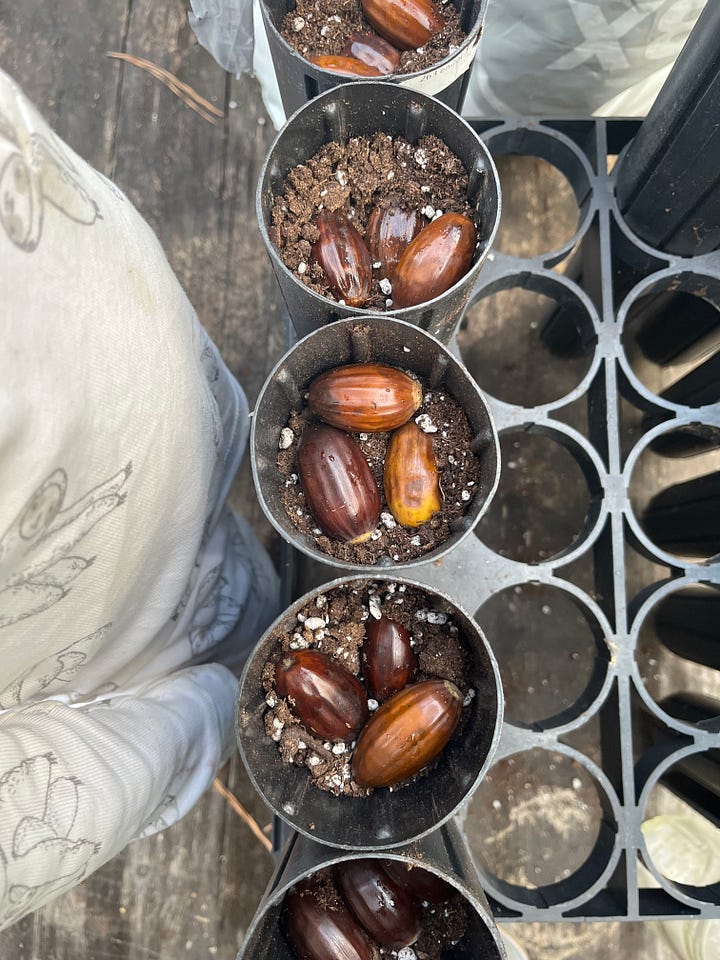
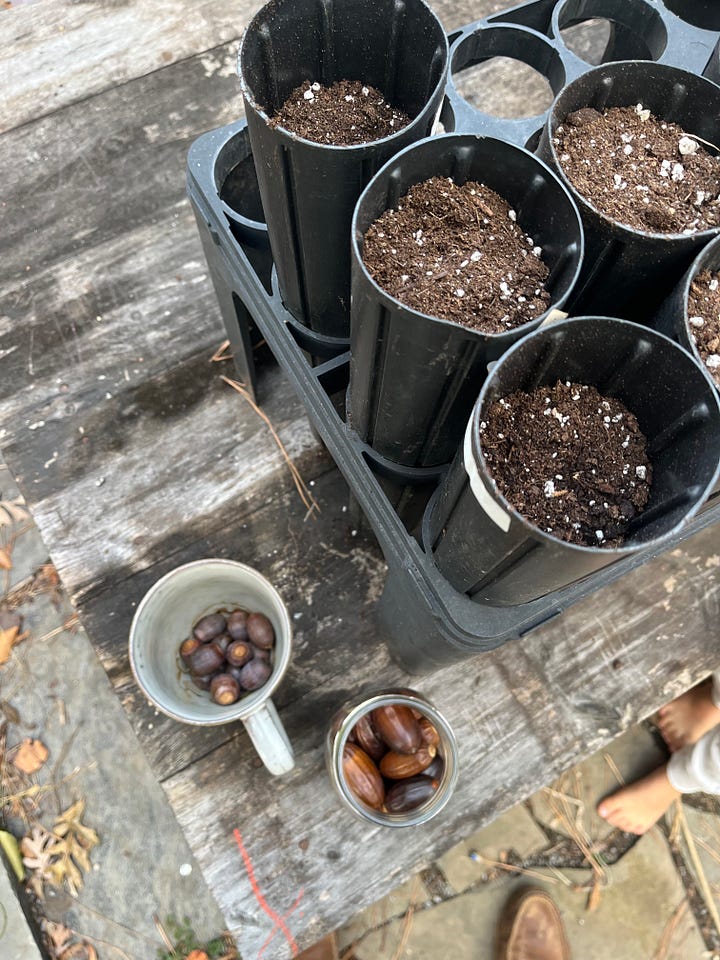

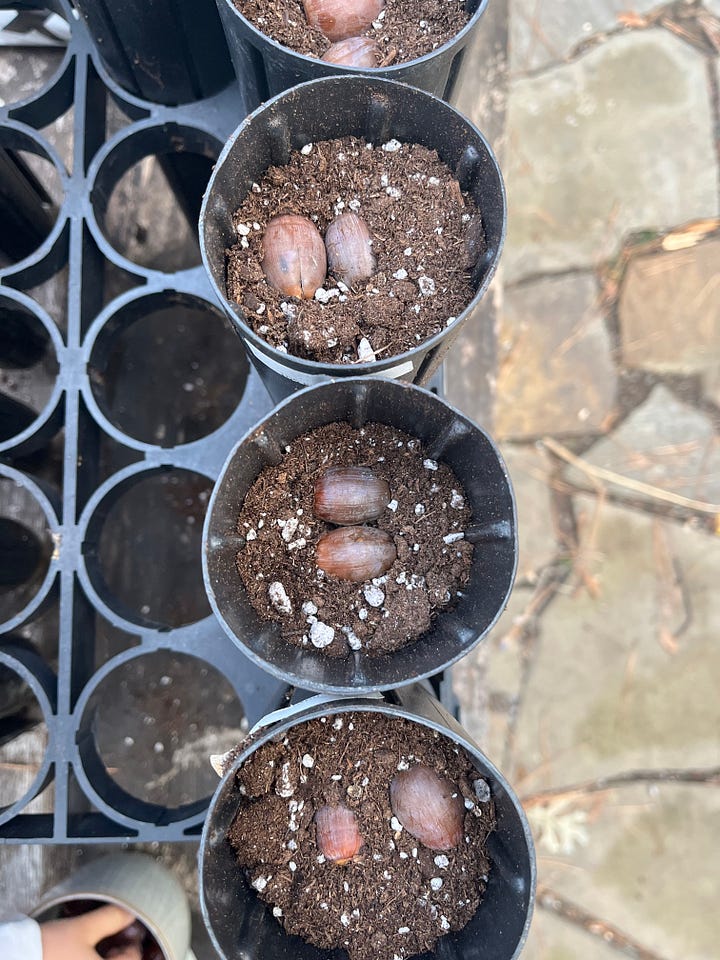
A Hike in the Woods
The kids and I got out and had a hike on Monte Sano. They were great! It wasn’t an easy hike and we had quite the uphill trek to get back to our vehicle. It was early October and it was beautiful. The leaves had barely begun to change. No reds, purples, or oranges yet.
Persimmons
This, was a seasonal first. On the hike with the kids, in early October, we found fresh, ripe persimons from a wild persimmon tree. They were incredibly tasty!
🚒 Fire Cider
We made some fire cider this past month. It’s getting close to being ready!
Morgan is hosting a workshop at the farm on how to make it. At this point, I believe it is full, but if you are interested, just email me at Taylor@acommonlife.co
🎙️ ACL Podcast
Morgan and I produce a weekly podcast!
Check it out on Spotify | Google | Apple | Amazon
🏡 Lawn Garden
I saw this picture online and thought it was really funny looking. Its a really healthy, just past prime cauliflower plant growing right in the middle of the lawn.
IF you can keep your lawn from competing with your vegetable plant for nutrients, it’s not a bad place to stick a plant or two. The ground hasn’t been disturbed so the microbial population is likely strong, it has living roots in the soil almost year round (good for nutrient capture and microbial health), and the soil is covered and likely holds water well!



